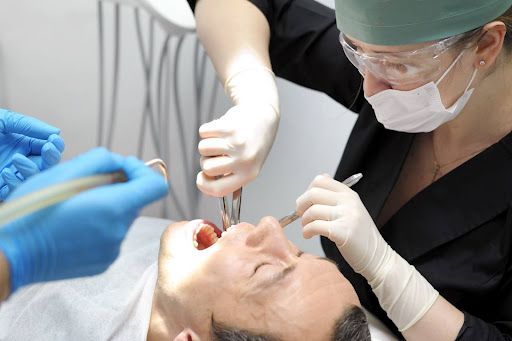All Porcelain/Ceramic Inlay vs. Onlay vs. Crown
November 20, 2013
When you have a tooth that has been compromised, whether from decay or fracture, restoring it is the only way to save it from further trauma. A direct restoration, such as a composite filling, works well for teeth with minimal decay, but for more extensive decay and fractures these direct restorations can compromise the integrity of the tooth. In this case, a larger restoration such as an inlay, onlay or crown is recommended. Today we’re going to share the differences between these major restorations and why we would recommend one over another at our Evanston dental office.
Inlay
An inlay is a piece of porcelain and ceramic that fits into your prepared tooth. Inlays are used when only the grooves of a tooth are affected by decay (not the cusps). Our doctors will remove the decayed portion of your tooth and then take a digital impression and design the inlay to fit perfectly into the removed portion of your tooth, like a puzzle piece. The inlay is milled using our CEREC machine, stained and glazed so that the color matches your existing tooth, and then cemented into your tooth. An inlay can cover one, two, or three surfaces.
Onlay
An onlay is a piece of porcelain and ceramic that fits over most of your prepared tooth. An onlay is used when the affected area of the tooth includes the cusps of the teeth. Our doctors remove the decayed portion of your tooth and take a digital impression. Then they design the onlay to match the rest of your tooth’s anatomy. Once the onlay is designed, it is milled using our CEREC machine. Then the dentists will stain and glaze it so that the color matches your existing tooth. Finally the onlay is cemented onto your tooth. An onlay can cover one, two, or three surfaces.
Crown
A crown is a piece of porcelain and ceramic that replaces your entire outer tooth structure. A crown is used when more than 50% of the occlusal surface (or biting surface) of your tooth is affected. Often times, a crown is used to replace an inlay, onlay, or filling that has become decayed again and the restoration would be so big that it would threaten the integrity of your tooth. Once the final digital impression is taken, our dentists design the crown and mill it using our CEREC machine. Once the crown is ready, Dr. Jim or Dr. Bob will stain and glaze the crown so that it matches the surrounding teeth. Finally they will cement the crown to your tooth.
In all three of these cases our CEREC machine mills the restoration out of a single porcelain/ceramic block which means that your restoration will be stronger than one made in a lab where the porcelain is often built by layering. As your natural tooth structure is the strongest material in your body, the best way to keep your teeth for your whole life is through preventative measures. However, once your tooth has been weakened by decay or fracture, our Evanston dentists will work with you to provide you with the best minimally invasive solution. Call our office today to set up a consult with our Evanston dentist office.
The post All Porcelain/Ceramic Inlay vs. Onlay vs. Crown appeared first on Stephens Dentistry.







